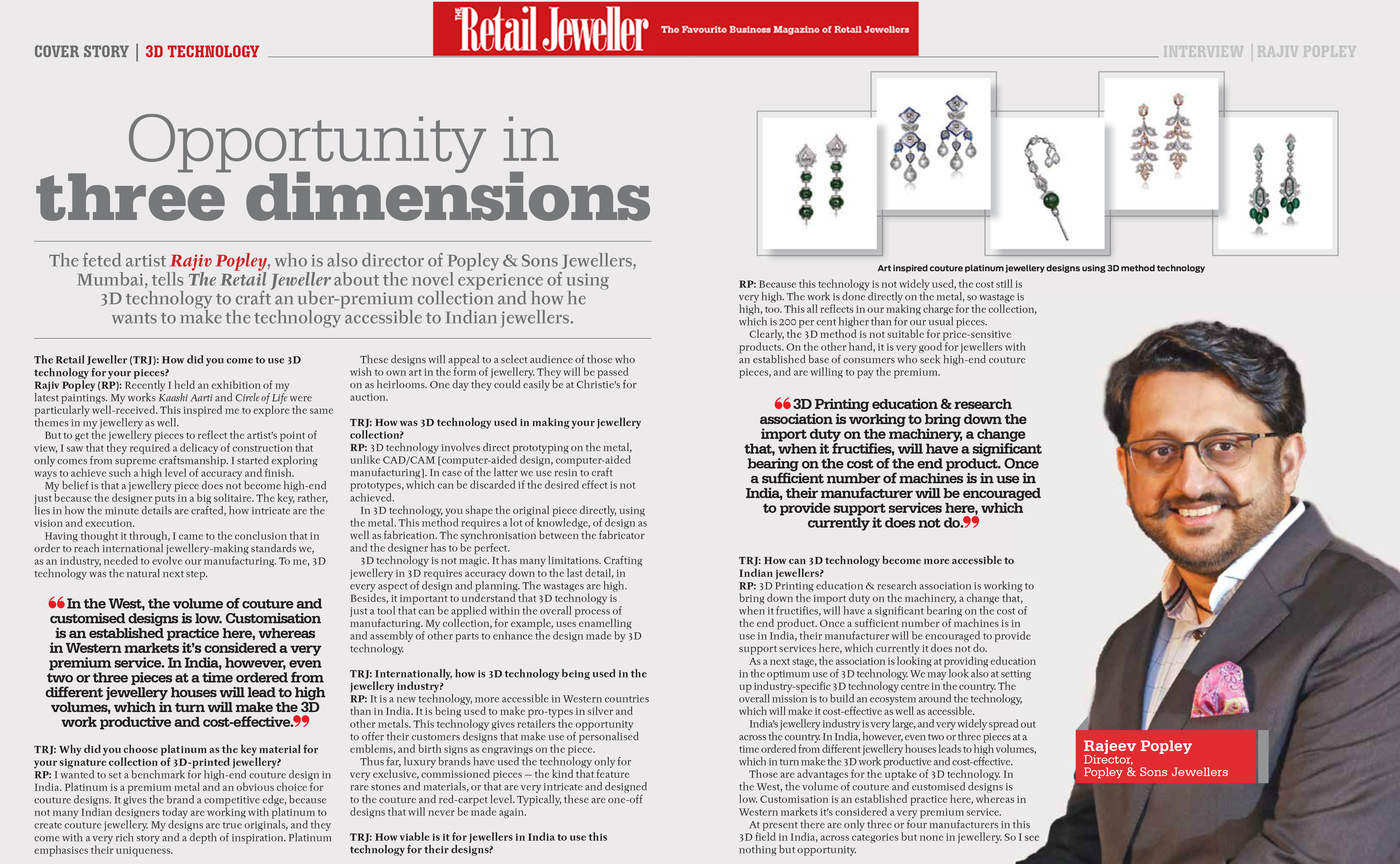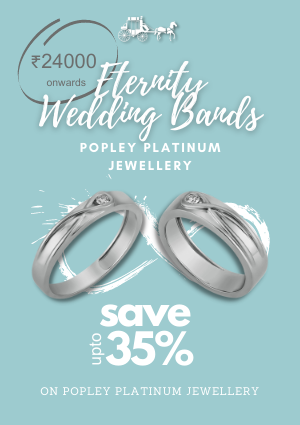The feted artist Rajiv Popley, who is also director of Popley & Sons Jewellers, Mumbai, tells The Retail Jeweller about the novel experience of using 3D technology to craft an uber-premium collection and how he wants to make the technology accessible to Indian jewellers.
__________________________________________________
The Retail Jeweller (TRJ): How did you come to use 3D technology for your pieces?
Rajiv Popley (RP): Recently I held an exhibition of my latest paintings. My works Kaashi Aarti and Circle of Life were particularly well-received. This inspired me to explore the same themes in my jewellery as well.
But to get the jewellery pieces to reflect the artist’s point of view, I saw that they required a delicacy of construction that only comes from supreme craftsmanship. I started exploring ways to achieve such a high level of accuracy and finish. My belief is that a jewellery piece does not become high-end just because the designer puts in a big solitaire. The key, rather, lies in how the minute details are crafted, how intricate are the vision and execution.
Having thought it through, I came to the conclusion that in order to reach international jewellery-making standards we, as an industry, needed to evolve our manufacturing. To me, 3D technology was the natural next step.
“In the West, the volume of couture and customised designs is low. Customisation is an established practice here, whereas in Western markets it’s considered a very premium service. In India, however, even two or three pieces at a time-ordered from different jewellery houses will lead to high volumes, which in turn will make the 3D work productive and cost-effective.”
TRJ: Why did you choose platinum as the key material for your signature collection of 3D-printed jewellery?
RP: I wanted to set a benchmark for high-end couture design in India. Platinum is premium metal and an obvious choice for couture designs. It gives the brand a competitive edge because not many Indian designers today are working with platinum to create couture jewellery. My designs are true originals, and they come with a very rich story and a depth of inspiration. Platinum emphasises their uniqueness. These designs will appeal to a select audience of those who wish to own art in the form of jewellery. They will be passed on as heirlooms. One day they could easily be at Christie’s for auction.
TRJ: How was 3D technology used in making your jewellery collection?
RP: 3D technology involves direct prototyping on the metal, unlike CAD/CAM [computer-aided design, computer-aided manufacturing]. In the case of the latter, we use resin to craft prototypes, which can be discarded if the desired effect is not achieved. In 3D technology, you shape the original piece directly, using the metal. This method requires a lot of knowledge, of design as well as fabrication. The synchronisation between the fabricator and the designer has to be perfect. 3D technology is not magic. It has many limitations. Crafting jewellery in 3D requires accuracy down to the last detail, in every aspect of design and planning. The wastages are high.
Besides, it important to understand that 3D technology is just a tool that can be applied within the overall process of manufacturing. My collection, for example, uses enamelling and assembly of other parts to enhance the design made by 3D technology.
TRJ: Internationally, how is 3D technology being used in the jewellery industry?
RP: It is a new technology, more accessible in Western countries than in India. It is being used to make pro-types in silver and other metals. This technology gives retailers the opportunity to offer their customers designs that make use of personalized emblems, and birth signs as engravings on the piece.
Thus far, luxury brands have used the technology only for very exclusive, commissioned pieces — the kind that feature rare stones and materials, or that are very intricate and designed to the couture and red-carpet level. Typically, these are one-off designs that will never be made again.
TRJ: How viable is it for jewellers in India to use this technology for their designs?
RP: Because this technology is not widely used, the cost still is very high. The work is done directly on the metal, so wastage is high, too. This all reflects in our making charge for the collection, which is 200 per cent higher than for our usual pieces.
Clearly, the 3D method is not suitable for price-sensitive products. On the other hand, it is very good for jewellers with an established base of consumers who seek high-end couture pieces, and are willing to pay the premium.
 Art inspired couture platinum jewellery designs using 3D method technology
Art inspired couture platinum jewellery designs using 3D method technology
3D Printing education & research association is working to bring down the import duty on the machinery, a change that, when it fructifies, will have a significant bearing on the cost of the end product. Once a sufficient number of machines is in use in India, their manufacturer will be encouraged to provide support services here, which currently it does not do.
TRJ: How can 3D technology become more accessible to Indian jewellers?
RP: 3D Printing education & research association is working to bring down the import duty on the machinery, a change that, when it fructifies, will have a significant bearing on the cost of the end product. Once a sufficient number of machines is in use in India, their manufacturer will be encouraged to provide support services here, which currently it does not do.
As a next stage, the association is looking at providing education in the optimum use of 3D technology. We may look also at setting up industry-specific 3D technology centre in the country. The overall mission is to build an ecosystem around the technology, which will make it cost-effective as well as accessible.
India’s jewellery industry is very large, and very widely spread out across the country. In India, however, even two or three pieces at a time-ordered from different jewellery houses leads to high volumes, which in turn make the 3D work productive and cost-effective.
Those are advantages for the uptake of 3D technology. In the West, the volume of couture and customised designs is low. Customisation is an established practice here, whereas in Western markets it’s considered a very premium service.
At present, there are only three or four manufacturers in this 3D field in India, across categories but none in jewellery. So I see nothing but opportunity.
Popley Store Address
Popley – Bandra | Popley – Opera House | Popley – Dubai



